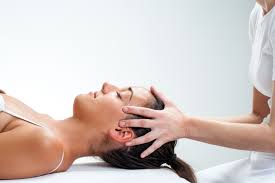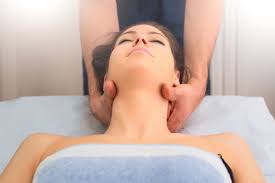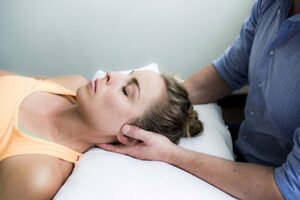

If you are wondering, “Can Cranial Manipulation Really Fix Forward Head Posture” then, you have come to the right place.
In this article I shall reveal if manipulating the head, the sacrum and the spine gently, can actually help you regain your lost cervical posture. The reason why I am able to provide an accurate detail of what needs to be done to fix turtle neck is because I once suffered from one.
It was all owing to my hit and trial methods diverted towards fixing nerd neck that helped me recover my original cervical posture.
Forward head posture (FHP) is becoming a widespread issue in modern society due to our increasingly sedentary lifestyles, dominated by screens.
One proposed solution is cranial manipulation, a technique that involves gently adjusting the bones of the skull and spine to correct posture.
This article will explore how cranial manipulation, in its various forms, can help address FHP, while providing scientific evidence to support its effectiveness.
Article Index:
- What is Forward Head Posture?
- Understanding Cranial Manipulation and Its Variants
- How Cranial Manipulation Targets Forward Head Posture
- Evidence Supporting Cranial Manipulation
- Conclusion
What is Crane Neck Posture?
Crane neck posture (FHP) is a musculoskeletal disorder in which the head protrudes forward relative to the body’s center of gravity.
This misalignment causes strain on the cervical spine, leading to discomfort and increased pressure on the neck, shoulders, and upper back. In many cases, FHP is associated with poor ergonomics, such as improper screen height or extended hours spent sitting.
A reduced craniovertebral angle (CVA), where the head tilts forward, is a clear indicator of this condition.
Understanding Cranial Manipulation and Its Variants
Cranial manipulation is a gentle, hands-on technique often practiced by osteopaths to address various health concerns.
Here is a friendly overview to help you understand this approach:
What is Cranial Manipulation?
- Definition: A therapeutic method where practitioners apply light pressure to the skull and upper spine to encourage healing and alleviate tension.
How Does It Work?
- Cranial Rhythmic Impulse: Practitioners believe in a subtle, rhythmic movement within the cranial bones, known as the cranial rhythmic impulse. By detecting and adjusting this rhythm, they aim to restore balance and promote well-being.
Variations of Cranial Manipulation:
Cranial Osteopathic Manipulation:
- Focus: Targets both the skull and neck areas to address issues like headaches, sinus problems, and jaw discomfort.
- Approach: Utilizes gentle pressure to release restrictions and improve fluid movement in the cranial region.
Cranial Manipulation Therapy:
- Scope: Encompasses various hands-on techniques, including massage, to relieve tension in the head and neck.
- Benefits: Aims to reduce stress, alleviate chronic pain, and enhance overall relaxation.
Osteopathic Cranial Manipulation:
- Emphasis: Highlights the role of osteopathy in treating postural issues, such as forward head posture, by adjusting the alignment of the skull and cervical spine.
- Goal: Seeks to improve posture, reduce musculoskeletal pain, and promote optimal nervous system function.
Potential Benefits:
- Pain Relief: May help alleviate tension headaches, neck pain, and migraines.
- Stress Reduction: Promotes deep relaxation, potentially reducing anxiety and tension.
- Enhanced Well-being: Some patients report improved sleep patterns and a general sense of well-being after sessions.
Considerations:
- Scientific Evidence: While many patients report positive outcomes, scientific research on the efficacy of cranial manipulation is ongoing, and more studies are needed to confirm its benefits.
- Consultation: It is essential to consult with a qualified healthcare provider to determine if this therapy is suitable for your specific needs.
In summary, cranial manipulation offers a gentle approach to address various health concerns, focusing on the skull and upper spine.
As with any therapeutic intervention, it is crucial to seek advice from experienced practitioners to ensure it is the right fit for you.
How Cranial Manipulation Targets Forward Head Posture
Cranial manipulation works by gently mobilizing the skull and vertebrae, promoting alignment in the cervical spine, which is essential for correcting forward head posture.
When the head is out of alignment, it places extra pressure on the muscles that support the neck. By adjusting the position of the skull, cranial manipulation helps restore balance to the spine, relieving strain and tension.
For those suffering from FHP and related conditions, such as temporomandibular joint (TMJ) dysfunction or tension headaches, cranial manipulation can provide significant relief.
For example, cranial manipulation for migraines has been shown to alleviate head pain, which is often a symptom of poor posture.
Another technique, cranial visceral massage, combines elements of cranial manipulation with deeper tissue work to target tension in both the head and internal organs.
This multifaceted approach can help restore overall body alignment and function.
Evidence Supporting Cranial Manipulation
As per a recent research study, cranial manipulation shows promise in treating forward head posture, especially when combined with other therapies like physical exercise (such as lat pulldowns) and ergonomic adjustments.
One study found that patients with FHP who underwent cranial osteopathic manipulation experienced improved craniovertebral angles and less neck pain.
Moreover, another research study shows that cranial manipulation therapy can improve head and neck alignment, reducing the symptoms of FHP, such as headaches and upper back tension.
However, it was noted that for the best results, cranial manipulation should be used in combination with exercises to strengthen the neck and upper back muscles (such as rows).
Conclusion
So, is cranial manipulation really the best forward head posture fix?
While cranial manipulation provides relief and improves posture, it is not a standalone solution.
A combination of skull manipulation, postural exercises, and lifestyle changes—such as adjusting screen height and improving sitting posture—are essential for long-term results.
Techniques like cranial visceral massage or cranial manipulation for migraines may complement the treatment, addressing associated conditions like headaches and TMJ dysfunction.
In conclusion, cranial manipulation is a helpful tool in the broader strategy to combat forward head posture, but a holistic approach is necessary for sustained improvement.
References:


